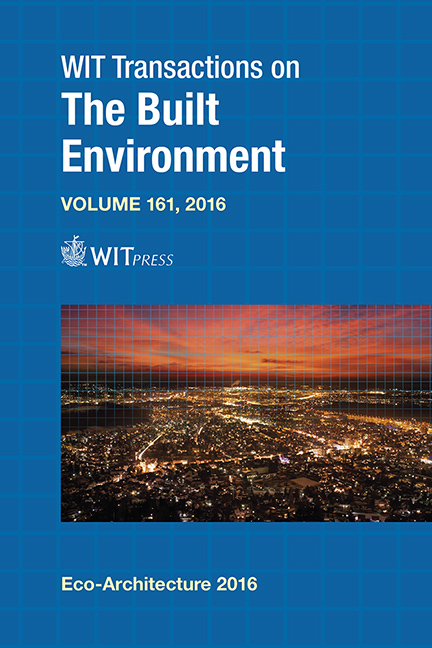Energy Performance Improvement And Cultural Enhancement Of The Andalusian Rural Heritage: Case Study – “El Cortijo Del Fraile”
Price
Free (open access)
Transaction
Volume
161
Pages
12
Page Range
59 - 70
Published
2016
Paper DOI
10.2495/ARC160061
Copyright
WIT Press
Author(s)
M. I. Pérez Millán, R. T. Yáñez Pacios, A. Contreras García, A. Socorro Picó
Abstract
The renovation of old cortijos, haciendas or lagares is a topical subject within the context of enhancing the Andalusian agrarian architecture. The abandonment of these unique farmhouses structures due to the industrialisation of the harvesting process has already drawn the administration’s attention to the importance of encouraging its maintenance. The Public Works and Housing Office and the Culture Office of the Andalusian Government, as well as local administrative bodies, have promoted its identification, examination and analysis to manage rehabilitation policies that facilitate the adaptation of these spaces of architectural heritage to new uses. This research paper gathers the methodology for the energy renovation of these constructions, enhancing their characteristic infrastructures and most significant assets. Various strategies support the traditional existing facilities of the “cortijos” inserting new technologies to supply the needs of the new programmes, optimizing the existing resources. Increasing rainwater collection surfaces and storage; improving the filtering and recycling methods to recycle rainwater, grey water and sewage; and increasing the effectiveness of solar and wind energy collection with new technologies that complement the old passive knowledge with updated designs or active systems. The main goal of this paper is to find strategies to extrapolate its application in similar cases among the Mediterranean European context. The application of this methodology in a case study shows the energy performance improvements proposed for the “Cortijo del Fraile”, located on the southeast of Nijar (Almería), inside the Natural Park of “Cabo de Gata-Nijar”.
Keywords
Andalusian rural heritage, cultural rehabilitation, architectural rehabilitation, bioclimatic strategies





